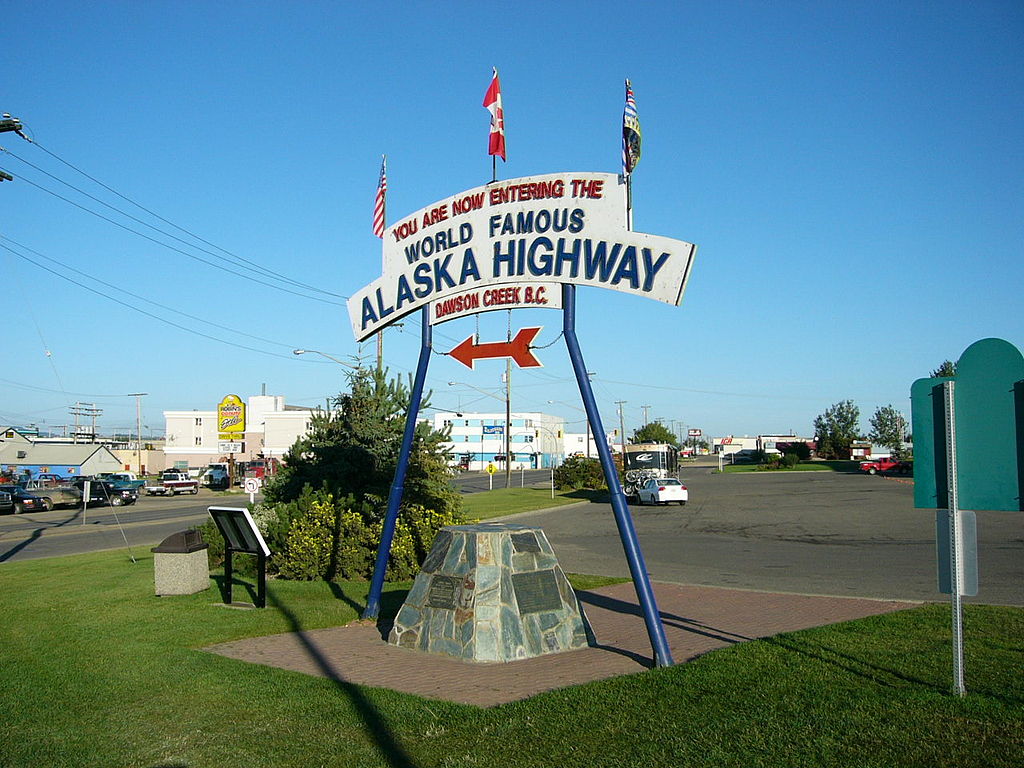News
Yukon MLA asks Ottawa to press U.S. to live up to Alaska Highway funding deal

A Yukon member of the legislature wants the federal government to press the United States to live up to a decades-old agreement to help pay for repairs to the Alaska Highway. (Photo: Jadecolour/ Wikipedia)
HAINES JUNCTION, Yukon –A Yukon member of the legislature wants the federal government to press the United States to live up to a decades-old agreement to help pay for repairs to the Alaska Highway.
“I’m just hoping this becomes a priority,” Wade Istchenko, who represents the constituency of Haines Junction, said Friday.
“The money has pretty much run out.
”
The Alaska Highway was built by the U.S. army during the Second World War after the Japanese attack on Pearl Harbour. It was a way to move supplies into Alaska, which the Americans feared was vulnerable. Canadian sections were transferred to Canada in 1945.
The section of road west from Whitehorse saw little traffic and gradually deteriorated.
In 1977, Canada and the U.S. addressed that with the Shakwak Agreement. The Americans promised to pay for upgrades and repairs to the highway past Haines Junction, Yukon, to the border as well as to the road from Haines, Alaska, to Haines Junction. Canada was to supply land, gravel and maintenance of the upgrades.
Between then and 2012, the U.S. spent about US$490 million under the deal. Canadian governments spent about three times as much on the rest of the highway.
But in 2012, after one last appropriation, the American money stopped.
“When the Obama administration got in, they stopped including funding for the project,” said Istchenko, who was highways minister under the previous territorial government and now sits on the opposition benches.
That final cheque was enough to underwrite some work every year since, but the money has run out.
“We made it last as long as we could, but it’s time to renew,” Istchenko said.
Officials from the U.S. embassy in Ottawa were not immediately available for comment.
Portions of unpaved road remain on all sections covered under Shakwak. As well, parts of the route have been badly damaged by slumping as the permafrost beneath melts away.
Yukon officials calculate it will take between $260 and $320 million for the necessary upgrades and for the U.S. to live up to its end of the deal.
The highway is heavily used. It sees up to 1,000 vehicles a day in the summer. Almost all – 85 per cent – are American.
As well, the highway remains the main land route into the state. The only other road runs far to the north.
U.S. officials have said the highway is important for strategic reasons. It is also a main supply route for Alaska’s energy industry and its primary tourist artery.
“It’s very important,” Istchenko said. “It’s a very active road.”
Istchenko has written a letter to Global Affairs Minister Chrystia Freeland asking her to bring up the Shakwak Agreement with her U.S. counterparts.
Yukon Premier Sandy Silver said he supports Istchenko’s letter.
“We believe that the U.S. government should continue to support the upgrades to this road and we will work at an intergovernmental level to ensure that Americans understand how this supports both American and Canadian interests,” he said Friday in a release
Grace Jang, a spokesperson for Alaska Governor Bill Walker, said in an email that the state supports federal funding for the upgrade, noting it would benefit Canadian and American travellers.
Global Affairs Canada spokeswoman Jocelyn Sweet said in an email that Canada, led by its embassy in Washington, continues to promote Shakwak as an important infrastructure project.
Silver said he has already raised the issue with Prime Minister Justin Trudeau.
Istchenko said the new U.S. administration might look favourably on a project that could stimulate business in the American North.
“I’m just hoping that this gets discussed.”





















